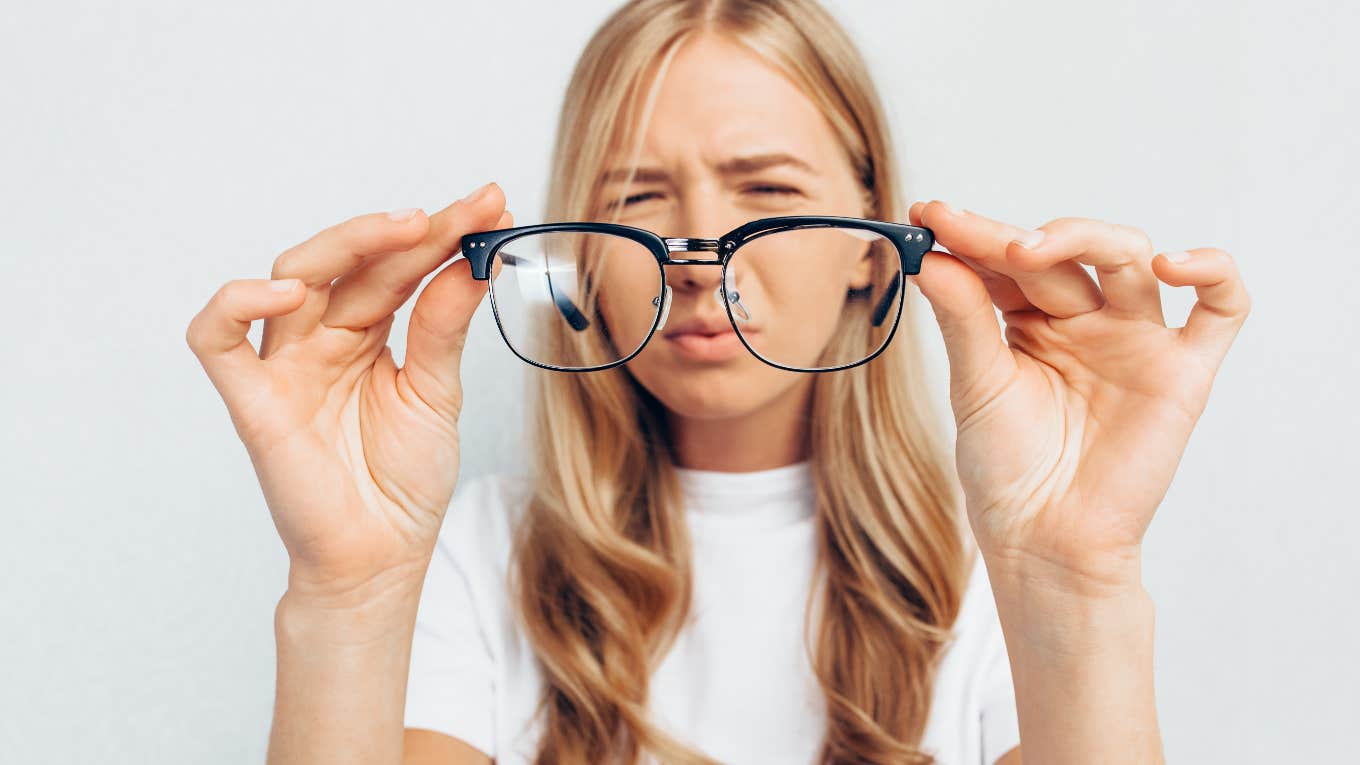Neuroscientist Explains 3 Simple Exercises That Can Help Improve Your Vision
Whether you already have some degree of vision loss or have 20/20 vision, these practices are beneficial.
 Shopping King Louie | Shutterstock
Shopping King Louie | Shutterstock Over 50 million American adults have some degree of vision loss — a number that is expected to grow in the coming years. Thankfully, neuroscientist and ophthalmologist Andrew Huberman shared three simple practices that can help improve and maintain the health of your eyesight.
His advice isn’t just for people who have already experienced a level of vision loss either.
“If you're a young person and you see perfectly, or you feel as if you see the world perfectly, you are in the best position to bolster, to reinforce that visual system, so that you don't lose your vision as you age,” Huberman explained.
Here are 3 simple exercises that can help improve your vision, according to a neuroscientist:
1. Get 2-10 minutes of sunlight every morning.
“Try and get as much sunlight in your eyes during the day as you safely can,” Huberman advised, adding that preferably, you do so early in the day and without sunglasses.
“If you are not viewing the sun, sunlight, even through cloud cover, for two to 10 minutes in the early part of the day,” he explained, “you are severely disrupting your sleep rhythms, your mood, your hormones, your metabolism, your pain threshold, and many other factors, including your ability to learn and remember information.”
According to WebMD, sunlight can also help reduce the chances of developing myopia, otherwise known as nearsightedness, especially if you implement this protocol during your teenage and young adult years.
Of course, don't go staring at the sun, as too much direct sun exposure can be damaging to your eyes.
2. Spend at least 2 hours outside.
 Paparacy | Shutterstock
Paparacy | Shutterstock
“Getting that sunlight during the day for two hours, even if you're reading other things, and doing other things outside, has a significant effect on reducing the probability that you will get myopia,” Huberman asserted.
He explained that "staying indoors, only getting artificial light, and looking at things up close leads to visual defects." By contrast, spending time outdoors can be beneficial. So, take your dog for a walk, relax in the sun, eat lunch outside — do anything you want, so long as you're doing it outside.
“Remember, we evolved mostly under outdoor conditions, not indoor conditions,” he added.
3. Distance view 20 minutes for every 90 minutes of 'close viewing.'
For every 90 minutes of close viewing — looking at your laptop or phone — Huberman recommends you do at least 20-30 minutes of distance viewing.
"It's actually not going to solve the problem, just to look up from your computer screen," he explained. "You need to go to a window. You need to look out at a distance. Ideally, you would even open the window."
“You want to relax your eyes and look out at the horizon. You want to go into what's called panoramic vision, and let your vision expand,” he explained. “In other words, you want to exercise these muscles.”
Your eyes are made to accommodate whatever it is you're looking at, but by constantly viewing things up close, you're pushing the boundaries of your eyesight. Distance viewing helps exercise your eyes to maintain eye health.
Sahlah Syeda is a writer for YourTango who covers entertainment, news, and human interest topics.

